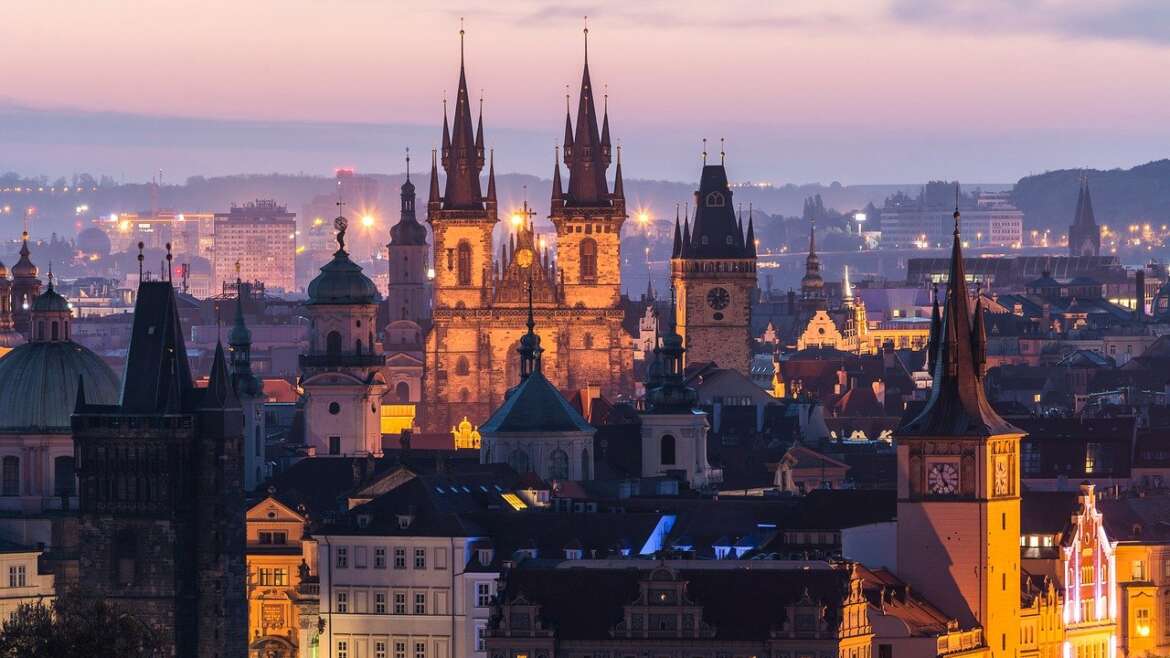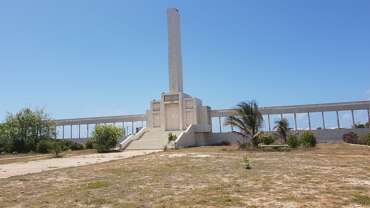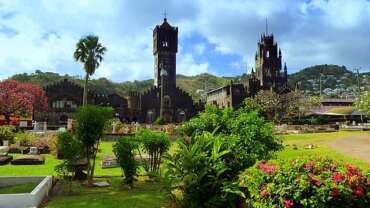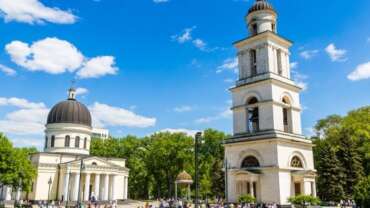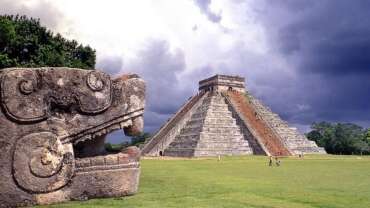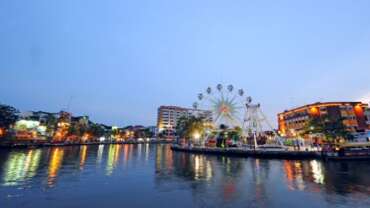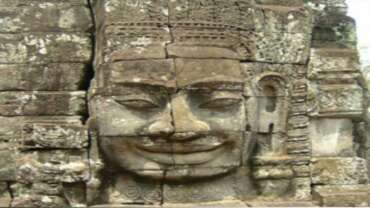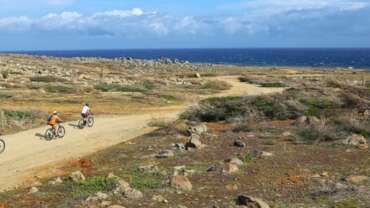Czech Republic - Land of Stories
The Czech Republic, also known by its short-form name, Czechia, is a landlocked country in Central Europe. It is bordered by Austria to the south, Germany to the west, Poland to the northeast, and Slovakia to the east.
The Czech Republic is a landlocked country in Central Europe. It is a member of the European Union. Since Jan. 1, 1993 it has been an independent state, previously it was part of Czechoslovakia. The territory of the Czech Republic consists of three historical lands – Bohemia, Moravia and Silesia.
The beginnings of the independent Czech state date back to the second half of the 9th century. Between the 9th and 13th century it was ruled by the Kings of the Přemyslid Dynasty. In the early 13th century the Duchy of Bohemia was elevated to a Kingdom. During the reign of Charles IV, King of Bohemia and Holy Roman Emperor, the country developed rapidly with Prague becoming the leading European metropolis.
From 1526 to 1918 the Czech lands were part of the Austrian Monarchy with the Habsburgs on the Bohemian throne. Holy Roman Emperor Rudolf II is considered the most important monarch of this House. At the end of World War One, the Lands of the Bohemian Crown joined together with the territory of today’s Slovakia making up the Czechoslovak Republic. In 1948 the Czechoslovak coup d’état opened the door to a communist regime. The Velvet Revolution of 1989 saw an end to totalitarian rule. In January 1993, the country split into two separate sovereign states – the Czech Republic and the Slovak Republic.
Romance and Adventure on the Elbe Cycle Route
Travelling from the source of the Elbe in the Krkonoše Mountains to Bohemian Switzerland along one of the most beautiful European rivers.
Get on your bike and set off on a journey guided by the majestic Elbe River. Head to the valleys of the mystic and imposing Krkonoše Mountains and continue through vast lowlands, past medieval towns, unique rock formations and places shrouded in myths and legends. On the Elbe Route you will be able to enjoy beautiful scenery, history and architecture whilst pedalling from Germany to the Czech Republic and back. A great cycling experience starts right here in the Krkonoše Mountains together with the Elbe.
The Elbe Route begins in Germany, where it is known as the Elberadweg. When we say it is known, we actually mean it is very well-known since it ranks among the most sought-after cycle paths throughout Germany and beyond its borders. In the Czech Republic the Elbe Route has become very popular with families with children. Following the elevation profile of the river is not very demanding, which is appreciated not only by cyclists keen on long-distance rides but also by absolute beginners. From its source to the mouth in the North Sea, the Elbe Route measures over a thousand kilometres (620 mi), with almost 400 km (250 mi) leading through the Czech Republic. It is a part of the EuroVelo European network and is divided into several interesting sections, so it is up to you whether you embark on the full experience or choose only some parts. Put on your helmets and saddle up your bikes as we are going to guide you along the Czech section of the Elbe Route pedal by pedal.
From the Krkonoše Mountains through a safari to a military fortress
A good place to start your along-the-Elbe trip is in Špindlerův Mlýn, which is a popular ski resort in winter and in summer a starting point favoured among mountain hikers. The town is located in a valley of the Krkonoše Mountains under the spring area of the River Elbe. You will not be able to reach this actual spot by bike, but from Špindlerův Mlýn you can set out for Medvědín and from there ride along the mountain road as far as the Labská bouda (Elbe Chalet), where you can safely leave your bike. The path to the spring is less than a 15 minute walk away.
Leaving Špindlerův Mlýn behind, head for Vrchlabí and from here continue onto Dvůr Králové, which will be appreciated mostly by children. The Dvůr Králové Zoo with an African safari is one of the most sought-after tourist destinations. You can embellish the story of your travels by claiming you have seen giraffes, zebras, elephants and lions whilst on your bike journey. Military history fans will insist on continuing along the path to Jaroměř since there stands Josefov fortress, which used to guard the borders of the Czech lands from the late 18th century. However, before that you will ride past Kuks, a unique complex of a Baroque spa and hospital.
In pursuit of architecture, gingerbread and sports
From Jaroměř, the Elbe Route continues to Hradec Králové, where you can admire the unique urban architecture of for example Josef Gočár, one of the most famous Czech architects, who ranks among leading personalities of cubism and functionalism. From Hradec Králové the path leads directly to Pardubice – a town boasting not only a beautiful chateau but also unusual points of interest. Pardubice traditionally attracts gourmets as well as sporting fans. The former come here for the renowned, sweet-smelling and delicious Pardubice gingerbread, while the latter arrive to witness the Velká pardubická steeplechase. Held for the first time in 1874, it is considered to be the toughest cross country horse race in continental Europe. You can get involved in a race too – perhaps on your bike along the Pardubice to Přelouč route or even further to the place where the oldest history of the Czech Republic was made.
In search of myths and legends
One such place is undoubtedly Brandýs nad Labem. The town has been an important transport hub since the Middle Ages, when a major route connecting Prague and northern areas of the Czech lands used to lead through here. Being a part of Brandýs nad Labem, Stará Boleslav is the oldest pilgrimage site in the Czech Republic. It is here where the legend of its patron came to be. One morning in the 10th century Wenceslas, Duke of Bohemia, was on his way to the church which used to stand in today’s Stará Boleslav, when suddenly he was attacked by the cohorts of his power-hungry brother Boleslav. So one of the oldest Czech legends sadly ended in fratricide. Subsequently, Wenceslas was canonized and his relics can still be found in St. Vitus Cathedral at Prague Castle even today. Nonetheless, you might know the name Wenceslas from Wenceslas Square in Prague city centre, where being the patron worthy of his name he oversees law and order in the capital city from atop his horse. By the way, Prague is just a stone’s throw away from the Elbe Route. As a matter of fact, it is just about 30 kilometres from Brandýs nad Labem.
However, we must not forget that we are travelling along the Elbe Route which is just taking us to the historic town of Mělník. Located on the confluence of the Rivers Elbe and Vltava, the town used to be included in the exclusive estate of Czech Queens, and came with the established wine tradition founded here by King Charles IV after importing vines from Burgundy and Champagne.
Situated not far from the town, Mount Říp is associated with a legend even older than that of Brandýs. Říp was supposedly climbed by Forefather Čech, who wished to look around to see if the surrounding lands were a good enough place for his tribe to settle. After a long journey he told his people on this mount that this was the country they had been looking for on their travels, since it was fertile, safe and prosperous. Showing their gratitude, the tribe of his people named their new homeland Čechy (Czech land). Some sources date this event to the mid-7th century, while others claim that the area had already been inhabited in the 6th century AD. The legend is still alive in the Romanesque Rotunda which is situated on the top of the hill and ranks among the oldest buildings in the Czech Republic.
Following historic events which must never be forgotten
After a small detour to Říp, continue towards Roudnice nad Labem and further onto Litoměřice. Here you can admire Mírové náměstí (Peace Square) with its unique Gothic houses, which are still lived in today. Nonetheless, there is another place situated near the Elbe River which witnessed one of the most tragic chapters in the history of the 20th century. Located only two kilometres from Litoměřice, the walled town of Terezín is divided by the River Elbe into the Large Fortress and Small Fortress. One of these was a Jewish ghetto during World War II while the other served as a Gestapo prison. A memorial was erected on this site to honour the victims of Nazi atrocities. Both the memorial and the whole fortress are national cultural monuments.
From Litoměřice the route slowly approaches its end in the Czech Republic. But before that you will ride through Ústí nad Labem and Děčín, with a beautiful castle rising up above the river and reachable via a path carved into the rock.
In the summer of 2016 (from June 1), a part of the route in Děčín will be closed – a detour will lead along the right bank of the River Elbe, and then by using a ferry you can get back onto the route.
Saving the best till last?
It is hard to say which of the historical sites or natural phenomena on the Elbe Route is the most beautiful. It depends on the tastes of individual cyclists. But one thing is for certain, and that is that the last stretch of the Elbe Route in the Czech Republic has something to offer everyone. In this area the Elbe flows through the unique landscape of Bohemian Switzerland National Park. The park consists of rock towers, arches and ravines, rock towns as well as mazes. Boasting the title the gem of Bohemian Switzerland, Pravčická brána is the largest sandstone rock arch in Europe.
The last stop on the Elbe Route in the Czech Republic is Hřensko, a popular gateway to the park with sought-after tourist attractions such as the Elbe Canyon and boat rides through deep gorges. Hřensko is the lowest-lying village in the Czech Republic, but because of temperatures that remain quite moderate even in the summer due to the massive rocks, the local fauna prospers here as nowhere else at this altitude. Apart from cyclists or other tourists visiting the National Park you may quite easily bump into scientists. However, that is nothing unusual for such a unique landscape which Bohemian Switzerland undoubtedly is.
All along the Elbe Route you will find countless opportunities to dive into refreshing water in the sweltering summer, or climb up a lookout tower and feast your eyes on the sights around. You will pass many small regional and family breweries as well as various sports centres. To put it simply, the Elbe Route is a place where you can leave your everyday worries behind, and where it applies, perhaps more than anywhere else, that the journey is its own reward.
Nonetheless, the Elbe Route is not the only cycle path in the Czech Republic. There is the well-liked Prague-Vienna Greenways, as well as the Brno-Vienna path, and of course the ever popular Moravian Wine Trails and Vltava Cycle Route (EuroVelo 7), leading from the Šumava Mountains in South Bohemia as far as Mělník, where the Vltava flows into the Elbe. Increasing popularity has been experienced by a cycle path along the River Ohře (EuroVelo 4), stretching from its source via Cheb and West Bohemia, as far as Litoměřice, where it also joins the River Elbe.
The Orlické Mountains and Podorlicko
The Orlické Mountains and Podorlicko – the beauty of untouched nature.
The melancholy of deep forests, the mysterious beauty of step valleys, the colourful silhouettes of old beech trees, the wild River Orlice, villages in the foothills spread all over the region, the rugged landscape interspersed with a dense network of cycle and hiking paths, which lead you to romantic chateaux and a unique system of military fortifications. Come and get lost in the Orlické Mountains!
A popular location for trips is Zemská brána, a rocky section of ground right near the Divoká Orlice, a river which gouged out the romantic valley with rock formations here. The ruins of Potštejn and Litice castles are an inherent part of the region. It is certainly also worth visiting the Pilgrimage Church of the Assumption of the Virgin Mary in Neratov. A curiosity here is the glass roof and unusual north-south facing of the church, thanks to which rays of sunshine fall right on the sanctuary at precisely noon on Easter Sunday.
Hanička artillery fort hidden under the ground
Whilst wandering around the Orlické Mountains, you must not forget to visit Hanička Fort, which belonged to the system of pre-war fortifications in Czechoslovakia. The artillery fort, which now serves as a museum, was secretly converted into a nuclear bunker in the 1970s. Under the fortress, at a depth of 20 to 36 m below the surface, is an intricate network of corridors, shafts, a unique water treatment plant, ammunition warehouses, dining halls and barracks for the men. The tour ends on the combat level of the surface of the building, where you again reach the surface via 126 steps. The temperature under the ground is 5 – 8 degrees, so we recommend warm clothing and suitable footwear. You can also walk the six-kilometre nature trail which passes by the light military fortification buildings in the area around Olešnice.
Extensive collections of pictures and weapons in Opočno
The collection of historical monuments, which is part of the complex of Chateau Opočno, stands testament to the way of life here in ages past, the sophistication and thinking of Bohemian society. Opočno Chateau will astound you with its three stories of arcade loggia in a rectangular shape. You can admire the well-preserved historical interiors here, which hold extensive collections of pictures and weapons or have a walk in the naturally landscaped park which surrounds the chateau. If you would like to get to know crafts long forgotten, all you have to do is visit the Letohrad Craft Museum. Board games, building sets, tin soldiers or trains are hidden away in the Museum of Toys in Rychnov nad Kněžnou.
Where else to set out for?
If browsing historical gems would wear you out, set out for Hradec Králové with its dominant feature, the White Tower. You can visit the local observatory and planetarium, the botanical gardens, or get to know the Hučák hydroelectric power plant, the Art Nouveau building of which stands proudly on the River Elbe.
Křivoklát Castle
The royal seat was built in the 13th century as a support base for the ruling family of Přemyslids.
The Protected Landscape Area of Křivoklátsko conceals a castle which, due to its excellent location surrounded by forests full of game, was a favourite of many Czech kings. This royal residence was built in the 13th century as a seat of the ruling Přemyslid dynasty. Vestiges of Czech kings and the splendour of their lifestyle is still evident today at every step. The halls of the castle witnessed many festivities and feasts, but also many consequential political talks and fateful diplomatic negotiations.
During a tour, you’ll be dazzled by the interiors of the Late Gothic chapel and the Royal Hall. You’ll be amazed by the library with 52,000 volumes. Chills will run down your spine on a visit to the torture chamber. And you will be awed by the magnificent view from the Great Tower. Cultural events and traditional markets at the castle will acquaint you with the crafts and goods produced by the inhabitants of the Křivoklátsko region.
Reason to visit
The most valuable part of the castle, with a massive cylindrical tower, is the Royal Hall, which has splendid star vaulting. After the Vladislav Hall at Prague Castle, it is the second largest hall in the Czech Republic. Every year in the first week of August, a traditional craft fair and the Křivořezání woodcarvers’ festival are held in the courtyard of the castle. You will see dozens of master woodcarvers at work and also a permanent exhibition of their creations.
Sloup Castle - visit a rock castle and hermitage
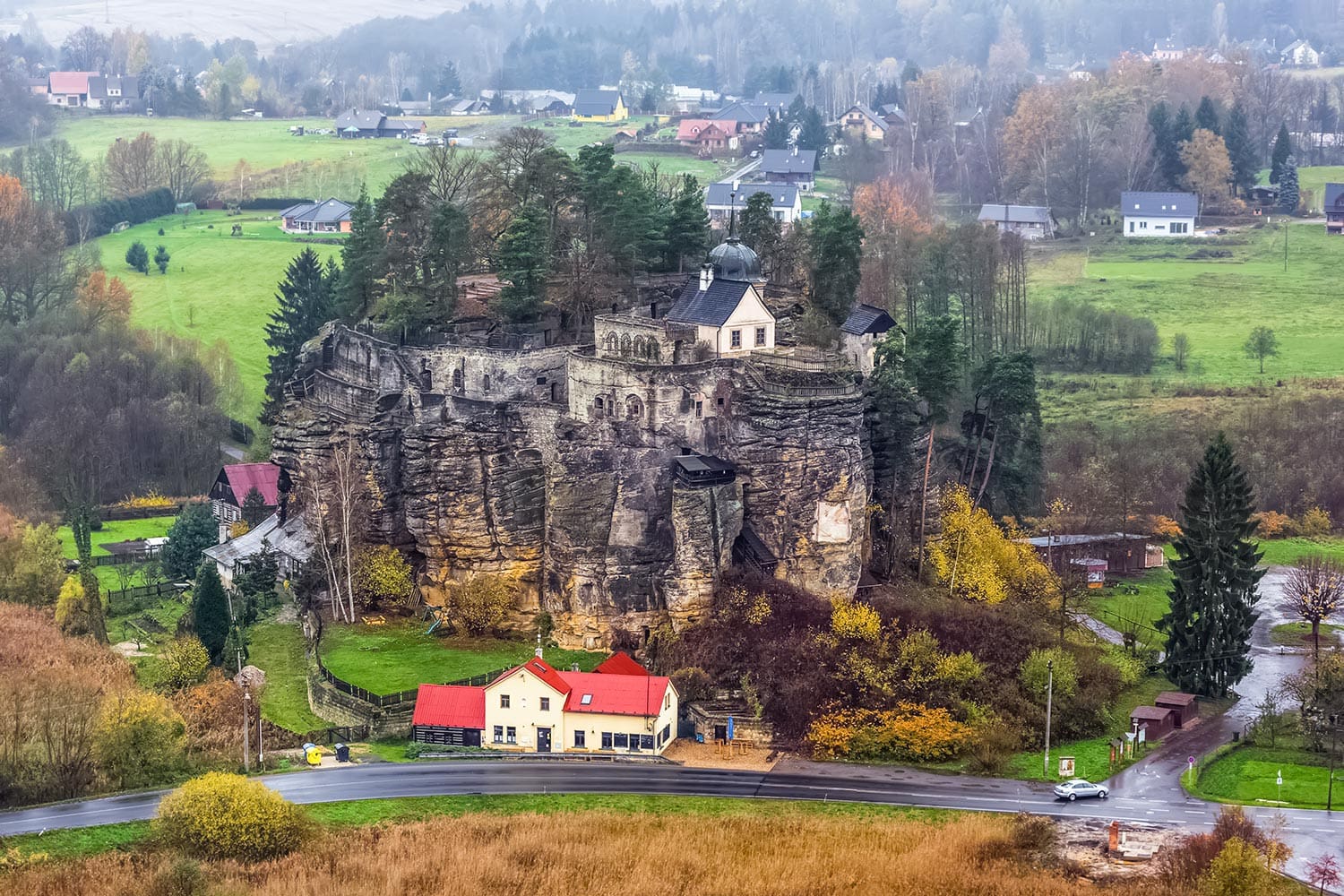
Climb the Knights’ Stairway to the top of the cliff and discover the rock castle and hermitage of Sloup, a place shaped by the hermits who frequently resided here throughout the ages. In the rock face you can see small rooms carved in the rock, a dungeon, and underground spaces – a chapel from 1693 and three artificial caves. On the walkway is a replica of the original wooden statue of a hermit with a telescope in his hand. The southeast wall is decorated with a sundial created by the hermit Václav Rincholin. Weddings and concerts are held in the rock church. From the look-out terrace you can see a stunning panoramic view of the Lusatian Mountains. Tours can be taken independently or with a guide.



